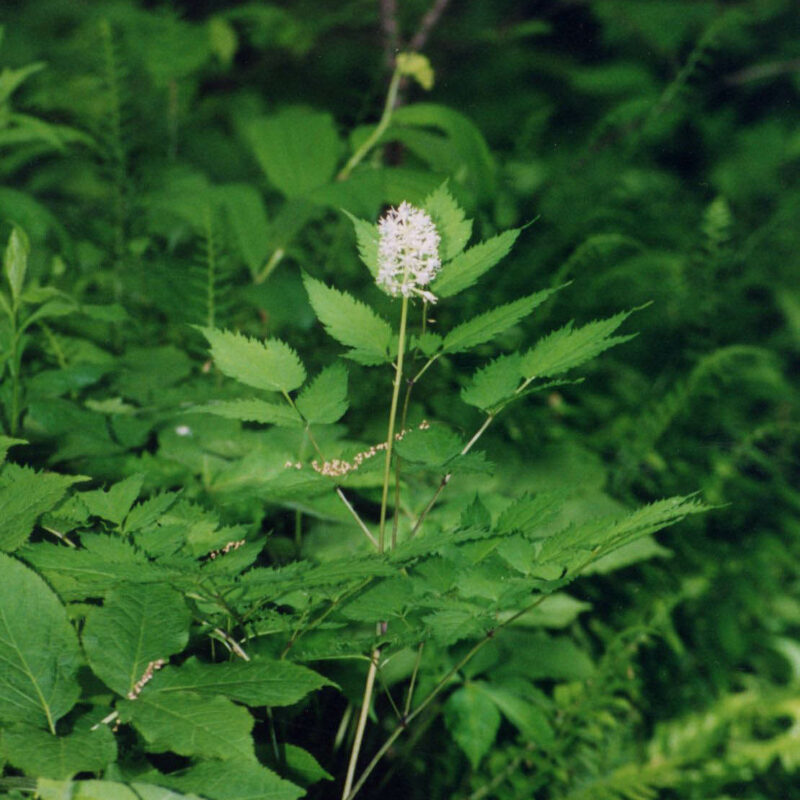White BaneberryActaea pachypoda
White baneberry has white flowers that bloom in May and June, and small white berries that mature through late summer and fall. The berries are poisonous and should not be consumed. This plant prefers moist conditions and medium shade.
USDA symbol: ACPA
General Information
| Plant Type | Forb |
|---|---|
| Height | 1.5 to 3 feet |
| Light Exposure | Part Sun, Shade |
| Soil Moisture | Dry |
| Bloom Color | White |

Tolerances
| Flooding / Inundation Tolerance | Low |
|---|---|
| General Resilience | 4 |
| Salt Tolerance | Low |
| Stress Tolerance | Alkaline Conditions |
Pollinator Value: High
| Bloom Months | May to June |
|---|---|
| Larval Host of | Moths |
| Specific Pollinators Hosted | Eosphoropteryx thyatyroides |
| Pollinator Benefit | Insect Pollinated, Supports Generalists |
Project Planning
| Project Type | Rain Garden |
|---|---|
| Coefficient of Conservatism | 7 |
| Herbivore Sensitivity | Medium |
| Lifespan | Perennial |
| Rate of Spread | Slow |
| Soil Stabilization | Shallow |
| Vegetative Reproduction | Clonal |
Range
| County | Carlton, Chisago, Cook, Fillmore, Hennepin, Houston, Lake, Olmsted, Pine, St. Louis, Wabasha, Winona |
|---|---|
| Ecoregion | Driftless Area, North Central Hardwood Forests, Northern Lakes and Forests, Northern Minnesota Wetlands, Western Cornbelt Plains |
| Approximate Eco Province | Eastern Broadleaf Forest, Laurentian Mixed Forest, Prairie Parkland |
